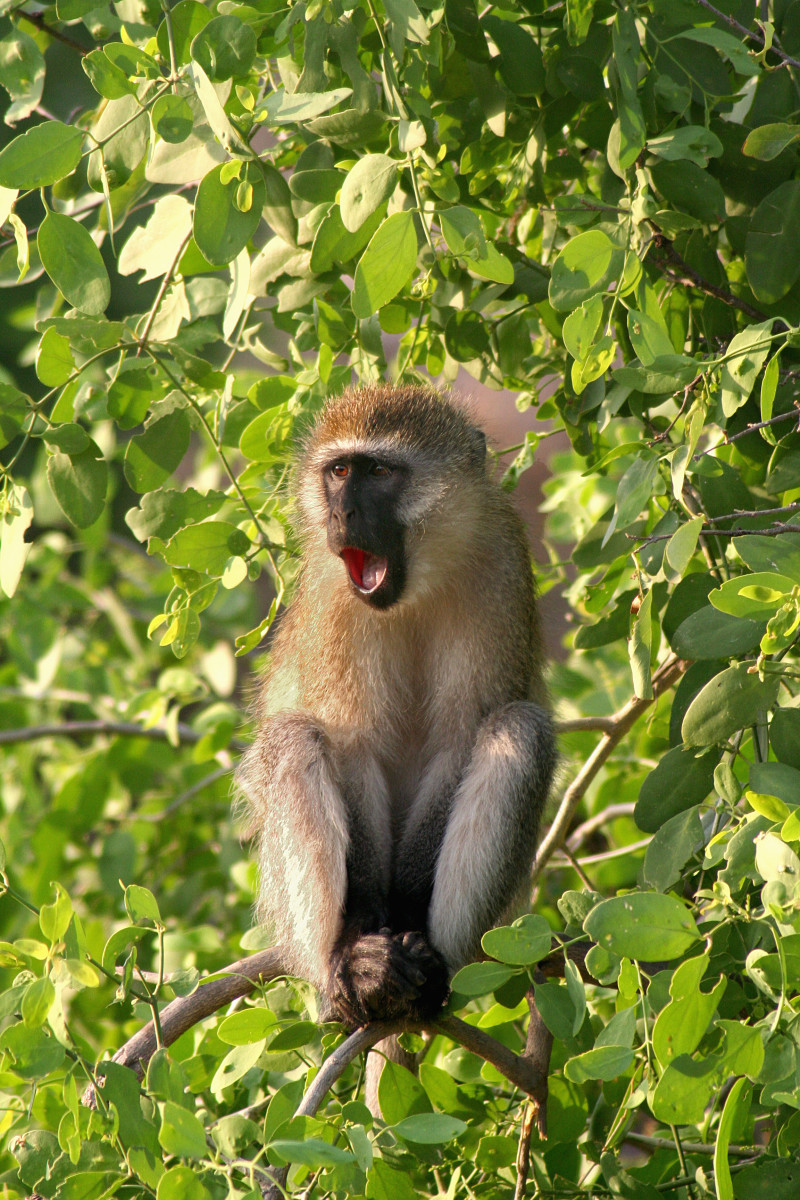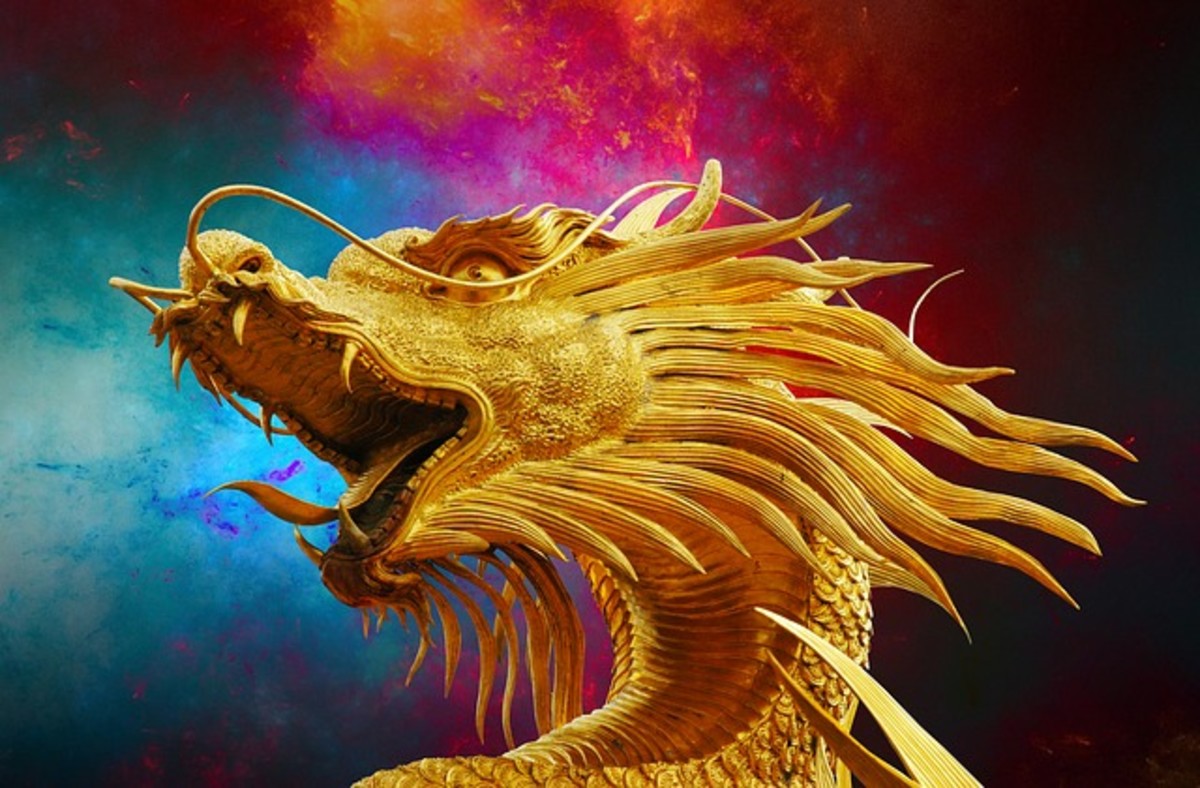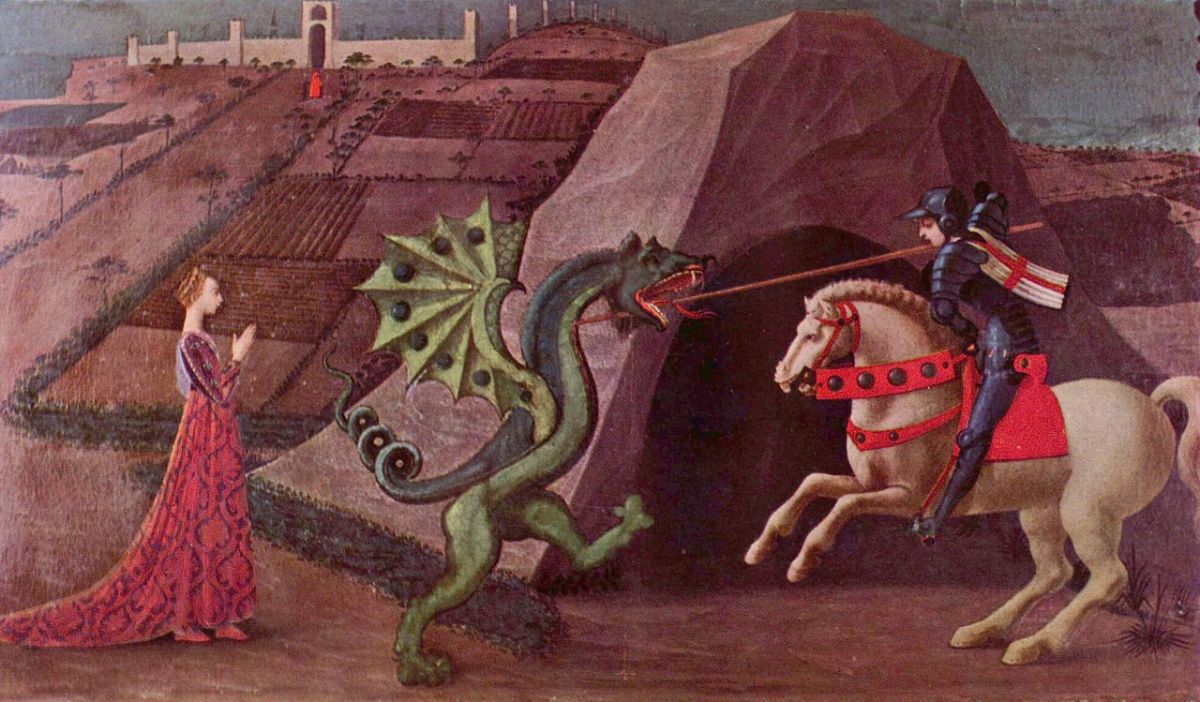Dragons are mythical creatures. Dragons do not exist. Dragons have never existed. Why, then, does every culture in the world have myths about dragons?
David E. Jones, an anthropologist, has a fascinating theory about the prevalence of dragon myths in all cultures: Humans have dragon in their DNA. More precisely, humans have the fear of dragons in their DNA. Dr. Jones explains his theory in his book, An Instinct for Dragons.
According to Jones, the dragon is the embodiment of an instinctive fear of the three main predators who preyed on our mammalian ancestors. The three predators are snakes, large birds of prey, (raptors, eagles) and the big jungle cats (lions, tigers, leopards). Individuals who instinctively fled these predators had a survival advantage which was passed on through their genes.
These instincts, buried deep in our DNA, eventually were expressed in depictions of dragons. The specific depiction of the dragon varies from culture to culture, but the three elements of snake, raptor, and big cat are almost always present. Dragons are a combination of these three animals—the reptilian body of the snake, the wings and sharp talons of the birds of prey, and the jaws (and sometimes the haunches and paws) of the big cats.
A Vervet Monkey in Kenya

What Is the Basis of This Theory?
David E. Jones observed vervet monkeys in the wild. He noticed that there were three distinct calls that the monkeys made upon seeing the approach of a snake, a bird of prey, or a big cat. They made a different call for each predator, and each call elicited a different response from the vervets. If it was a snake, they would move up or down a tree away from the snake; if it was a bird of prey, they would move down the tree to avoid the bird’s talons; if it was a big cat, they would move up the tree away from the cat. These actions were only taken in response to the specific call, and each action was specific to the predator.
Our mammal and simian ancestors were much smaller than human beings. The predator animals would have been all the more terrifying and dangerous to these relatively small creatures way back in our family tree. With no natural abilities to fight these predators, the only chance for survival was flight. Any ancestor who had the ability to recognize the approach of the predator and flee just a little bit faster than others would confer this genealogical advantage to its offspring. This instinct thus became encoded into the DNA.
Eventually, the three separate predator animals merged into one, the dragon, through a process called "clumping." Scientists who study the brain and leaning have observed that humans have a tendency to "clump" (group) things together for easier recall.
Are Dragons Really Dinosaurs or Lizards?
While dragons have some features in common with dinosaurs—large size, elongated reptilian bodies—there are two reasons that dinosaurs are unlikely to be the source of dragon myths.
First, primates and dinosaurs did not co-exist. Dinosaurs were extinct before primates came into existence so early primates and dinosaurs never crossed paths.
Second, the dragon myths are much older than the discovery of dinosaur fossils. Early humans would not have encountered dinosaur fossils which are buried deep in the earth's strata. Further, even if they had come upon dinosaur bones, since a fossil is seldom intact and since it is only bones without any clue to the outer appearance of the animal, they would not have been able to see a dragon as it is depicted in myth.
The Komodo Dragon, a large lizard, is still extant, but it is not the source of dragon myths. It is found in only one place in the world (a few Indonesian Islands) and dragons are worldwide. It lacks many of he features of the dragon. And most importantly, it was named after the dragon, a preexisting concept, and thus could not be the source of the myth.
What About the Other Features of Dragons?
Most depictions of dragons have horns, beards, a mouth full of sharp teeth, foul-smelling breath, and a loud roar They often breathe fire. These features most likely come from the big cats. Imagine our monkey-like ancestor face to face with a big cat that is ready to pounce upon him. The terrified prey would see the cat’s ears erect (looking like horns), it’s ruff and whiskers (looking like a beard), and a mouthful of enormous teeth.
The prey would smell the foul breath that is typical of carnivores and would feel it’s hot breath—breath that might have felt as hot as fire to the terrified prey. Any animal that just managed to escape this terrifying encounter would forever associate these features with danger. Even if the predator was not seen, these other clues would signal the instinct for flight.
A Thai Dragon

Why Are Dragons Often Associated with Water, Maidens, and Treasure?
Association of dragons with water probably arises because the predator animals are most likely to be encountered near water. All animals must drink—the monkeys must leave the safety of the tree to get water. And when they do, they might encounter a thirsty—and hungry—predator.
Dragons seem to be inordinately fond of taking maidens captive or preying upon them. Could this not be because of the importance of young women to the group? Young women, in particular, must be protected. Not only are they smaller and weaker than the males, but they bring forth the next generation. Any group that did not have an instinct to protect its maidens would soon cease to exist. The instinct to protect the child-bearers and rearers is necessary to ensure the survival of the species.
Dragons guarding treasure may reflect predators preventing the simian from reaching food. The fruit in the upper levels of a tree might be unobtainable because of fear of the raptor, and food on the ground (like roots, berries, insects) would put the simian in danger from snakes and big cats.
Saint George and the Dragon

Why Are Chinese Dragons Different from Other Dragons?
In most cultures, dragons are fierce, evil, and bringers of death, but the Chinese see dragons as symbols of good luck and success.This different perception of dragons may be due to the fact that China was for centuries mostly isolated from contact with the rest of the world. The Chiness people had fewer threats from outside of their own world, so they were able to "tame their inner dragon." There might also be some identification-with-the-aggressor and/or denial going on: We need not fear the dragon, he is our protector.
The Chinese dragon also differs from other dragons in that it is more like a sinewy snake with less of the bird and cat features.
A Chinese Dragon

Why Are Dragon Myths Most Evident During Certain Eras?
The ancient sea-faring civilizations had plenty of dragon myths, often sea dragons. The terrors of sea voyages may have been symbolized by dragons. When a huge wave suddenly rose up from the sea and engulfed a sailor’s boat, could it not have seemed like a dragon?
Dragons were widely believed to be real during the middle ages. Knights would often have to go out to slay them to save their town and country. The Middle Ages was a time of great social upheaval when humans were first beginning to form communities larger than the family or tribe. The stresses and difficulties of this time of transition were personified as dragons. During this era, coats of arms and flags often depicted a dragon--it was way to claim the dragon's fierce prowess for one's own.
Our civilization today is also under great stress. We may not believe dragons to be real, but they can become symbols of our fears of war and terrorism and so many other things that threaten our survival, but are out of our control
How Popular Are Dragons in Our Culture Today?
Dragons are very popular. There are hundreds of books, movies, games, and merchandise items that feature dragons. There is even a genre of romance novels featuring shape-shifting dragons that can take human form. Sometimes the dragons are monsters to be vanquished, and sometimes they are transformed into helpful companions, even pets. They have even been made cute and cuddly for kids. We tame them or we kill them, dragons symbolize our triumph over our inner fears.







